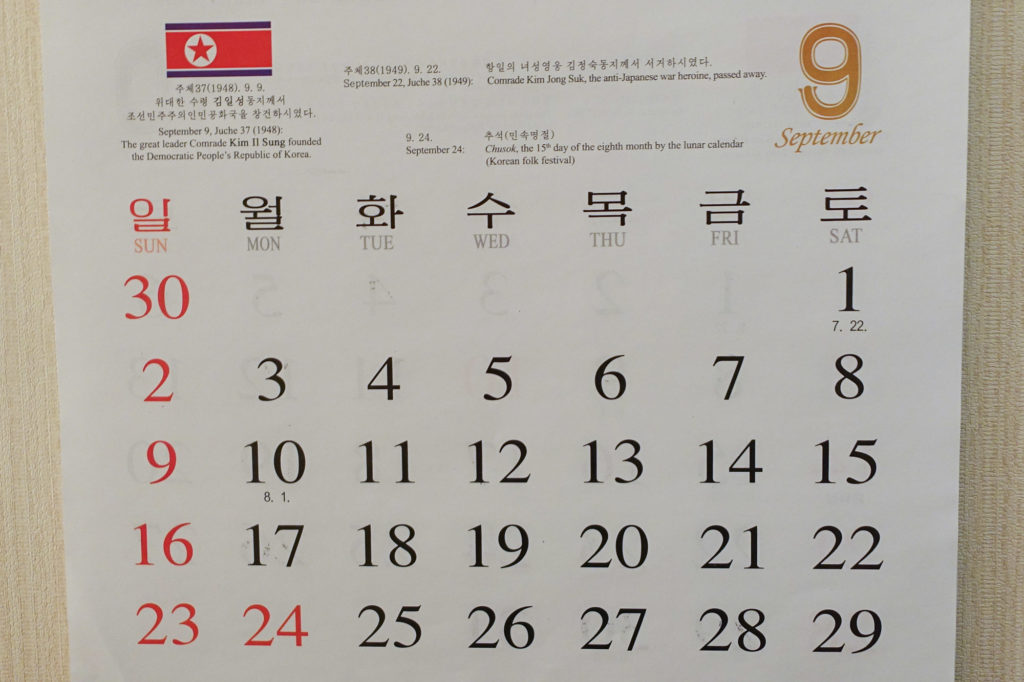What Year Is It in North Korea? – the Juche Calendar
If you thought it was 2024, think again! In North Korea, the year system is different from what you may be used to. North Korea implement their own calendar named the Juche calendar. We explain it below!
What is the Juche calendar?
The Juche calendar is an alternative dating system used in North Korea where the years are based on the Juche era.
Unlike the Gregorian calendar which begins at year 1 according to the birth of Jesus Christ, the Juche calendar begins from 1912, the year of Kim Il Sung’s birth. Kim Il Sung is the founder and the Eternal President of North Korea.
Using the Juche calendar, 1912 is known as Juche 1 to North Koreans. The year 2024 is therefore known as Juche 113.
The name of the Juche calendar is derived from the state ideology of ‘Juche’, loosely translated to ‘self-reliance’. This ideology was developed by Kim Il Sung himself.
When was the Juche calendar introduced?
The Juche calendar was introduced by decree on July 8, 1997, the three-year anniversary of the passing of Kim Il Sung. In the same decree, Kim Il Sung’s birthday became officially known as the ‘Day of the Sun’ and is celebrated annually. The Day of the Sun can also be regarded as Juche New Year and is North Korea’s most important date, our tours attend the festivities each year!
The guidelines of the Juche calendar were outlined on August 25, 1997, and the Juche calendar began official use on September 9, 1997, North Korea’s foundation day. From this date, all year-bearing items must reflect the new Juche era dating system.
What are the rules on using the Juche calendar?
The Gregorian calendar is not completely sidelined in North Korea, it’s still used in conjunction with the Juche calendar, even on official documents. However, there are important rules.
For any date including or after 1912, the date must be written in either of two formats: May 22, Juche 113 (2024), or simply as May 22, Juche 113.
There is no Juche 0. Years prior to 1912 (Juche 1) continue to be written as per the Gregorian calendar, there is no ‘before Juche’ or similar concept.
If a dating period begins prior to Juche 1, such as 1910 – 1985, it’s continued to be written as per the Gregorian calendar, not as 1910 – Juche 74.
The days, weeks and months of a particular year remain unchanged.
When is the Juche calendar used?

The Juche calendar has been used universally across North Korean society since September 9, 1997. This includes official documents, newspapers, radio stations, architecture, transport, banknotes, and birth certificates. The Gregorian date is typically included in parenthesis in these cases.
The Juche calendar system only applies to dates newly published and retrospective changes to published dates prior to September 9, 1997 are not required.
How do you work out the Juche year quickly?
It’s easiest to work out the difference between 1912 and our current year (eg. 2024), and then add 1. This makes it currently Juche 113.
Did you know?
Back in 2015, North Korea also implemented its own time zone (GMT+08:30) which put them 30 minutes behind Japan, reflective of the timezone prior to Japanese colonisation. ‘Pyongyang Time’ has since been abolished during 2018, reverting North Korea’s time zone back to GMT+9.
Celebrate with us over Juche New Year, and perhaps pick up a Juche calendar for your wall to begin tracking time the Juche way!

comments
Be the first to leave a comment forWhat Year Is It in North Korea? – the Juche Calendar